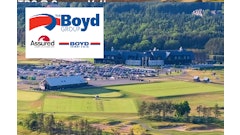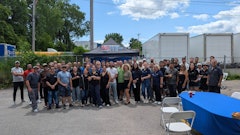
Toronto, Ontario — On June 24, the Automotive Parts Manufacturers’ Association (APMA) hosted a webinar overviewing the upcoming implementation of CUSMA, the new trade agreement between Canada, U.S., and Mexico.
Hosted by Flavio Volpe, the webinar featured two panelists: Joy Nott, Partner, Trade and Customs Practice at KPMG and Karin Muller, Director, Customs Compliance & Trade Governance at Magna International.
Throughout the webinar panelists informed viewers about the difference between NAFTA and CUSMA, as well as provided concrete examples on how to both prepare and adjust to the new trade deal, which will be effective on July 1, 2020.
For a lot of companies who haven’t completed many steps on the road to preparing for the CUSMA “you’re in good company,” said Muller.
Adding that it is hard to comply and understand all the new rules associated with this legislation in under 30 days—during a pandemic.
One of the big differences between NAFTA and CUSMA is terminology, said Nott. In the NAFTA agreement auto parts were just considered ‘parts’ and were all put under the same umbrella. However, with CUSMA there are three different categories that auto parts can fall under—core parts, principle parts, and complementary parts—each group having their own requirements and expectations.
Another key difference is the CUSMA Certification process; there are nine data requirements required and businesses are unable to use NAFTA agreements once it is introduced.
The reason business owners are unable to reuse NAFTA certificates is, as Nott put it, “on June 30, at midnight NAFTA dies,” meaning all prior certifications will be invalid.
The panelists ended the webinar with some good news telling viewers that when the bill is introduced most governments will allow for “maximum flexibility” for the first six months.
However, they noted that in no way does this mean it is “a free for all” and to be safe all automotive businesses should adhere to CUSMA’s requirements.
Click here to view the full recording of the webinar.



















